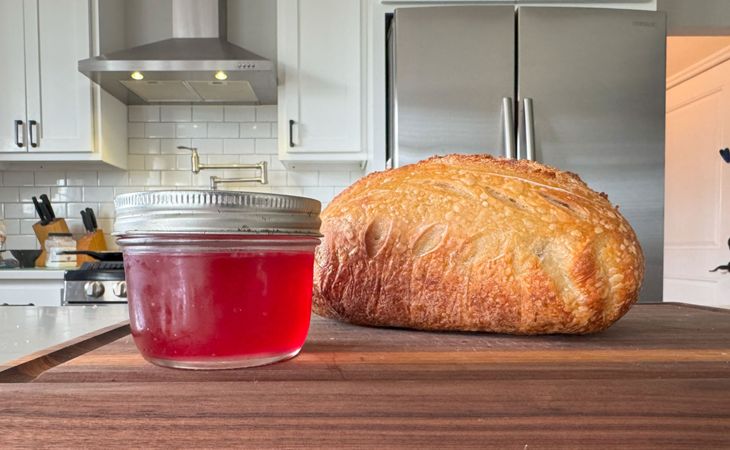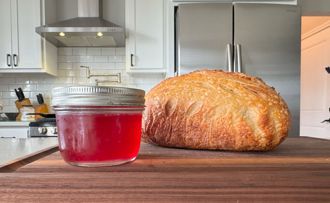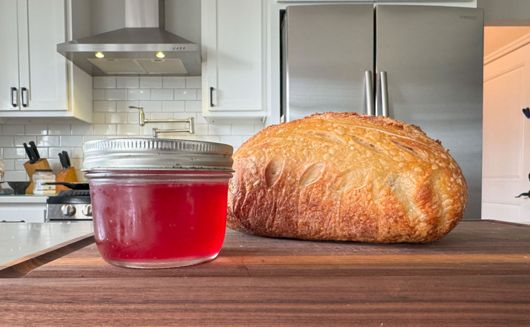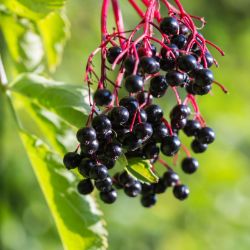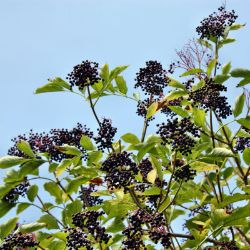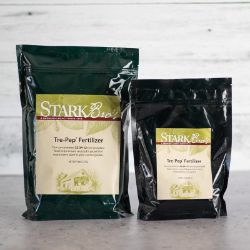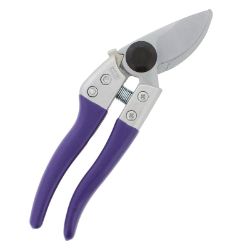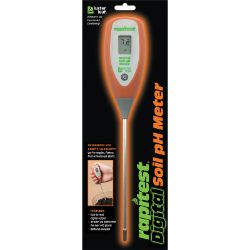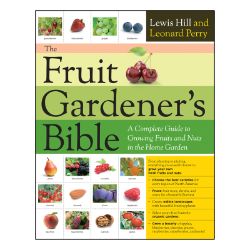Pest & Disease Control for Elderberry Plants
Every plant has the future potential for disease and insect damage. Factors such as location and weather will play a part in which issues your plants encounters. If available, disease-resistant varieties are the best option for easy care; and for all types of plants, proper maintenance (such as watering, pruning, spraying, weeding, and cleanup) can help keep most insects and diseases at bay.
NOTE: This is part 5 in a series of 9 articles. For a complete background on how to grow elderberry plants, we recommend starting from the beginning.
Tomato Ringspot
Infected plant will produce blackened, malformed or dead buds, and will appear weak. Spread through worms traveling in the soil or pollen transfer.
Natural Control
- Test for nematodes prior to planting, good weed control.
Other Control Options
- Consult County Extension Agent
Fungal Canker
Stress conditions that weaken the plant such as injury, flooding, drought, etc.
Natural Control
- By pruning and burning of infected canes.
- Plant species suited to your hardiness zone, soil type and sun exposure.
Other Control Options
- Consult County Extension Agent
Powdery Mildew
Whitish-gray powdery mold or felt like patches on buds, young leaves and twigs. Leaves may crinkle and curl upward. New shoots are stunted. Over winters in fallen leaves.
Control
- Remove and destroy all leaves before overwintering.
Other Control Options
- Consult County Extension Agent
Leaf Spot
Appears as black or brown spots on underside of leaves. Often the center falls out leaving a hole with a red halo. Leaves may turn yellow and fall. Fruit will also get spots, sunken areas and cracks.
Natural Control
- Remove and destroy all leaves before overwintering.
Other Control Options
- Consult County Extension Agent
Thread Blight
Leaves wilt, curl and turn brown, usually in the shaded part of the plant. A white threadlike fiber will form in advance of dead areas.
Natural Control
- Pruning to promote better penetration of sunlight and air movement may help.
- Prune out infected twigs and branches may provide adequate control.
Other Control Options
- Consult County Extension Agent
Root Rot
Poorly drained soil, wet soil should be well tilled with organic matter prior to planting. Plants become unthrifty. Leaves may turn yellow to red and collapse. The crowns, when sectioned, exhibit a brown-black decay. Large roots lack small feeder roots. Larger roots may have large brown-black lesions present.
Natural Control
- Purchase healthy propagation stock.
- Select well-drained fields.
- Remove and destroy diseased plants.
Other Control Options
- Consult County Extension Agent
Verticillium Wilt
Infected areas will have yellowing foliage, slowed growth, large seed production and death of branches. New canes will often wilt.
Natural Control
- Destroy infected plants.
- Use plants resistant to the disease.
Other Control Options
- Consult County Extension Agent
Thrips
Tiny, slender, fringed wing insects ranging from 1/25 to 1/8” long. Nymphs are pale yellow and highly active and adults are usually black or yellow-brown, but may have red, black or white markings. Feed on large variety of plants by puncturing them and sucking up the contents.
Natural Control
- Hi-Yield® Vegetable & Ornamental Insect Control
Cane Borer
Wilted tip on plants indicates a possibility of a little borer. If it breaks of readily, and is hollow, prune back branch until no longer hollow. Burn all pruning. Note: Follow all directions as indicated. Adult is a long-horned beetle. Larvae indicated by sawdust.
Natural Control
- Remove and destroy infected canes.

